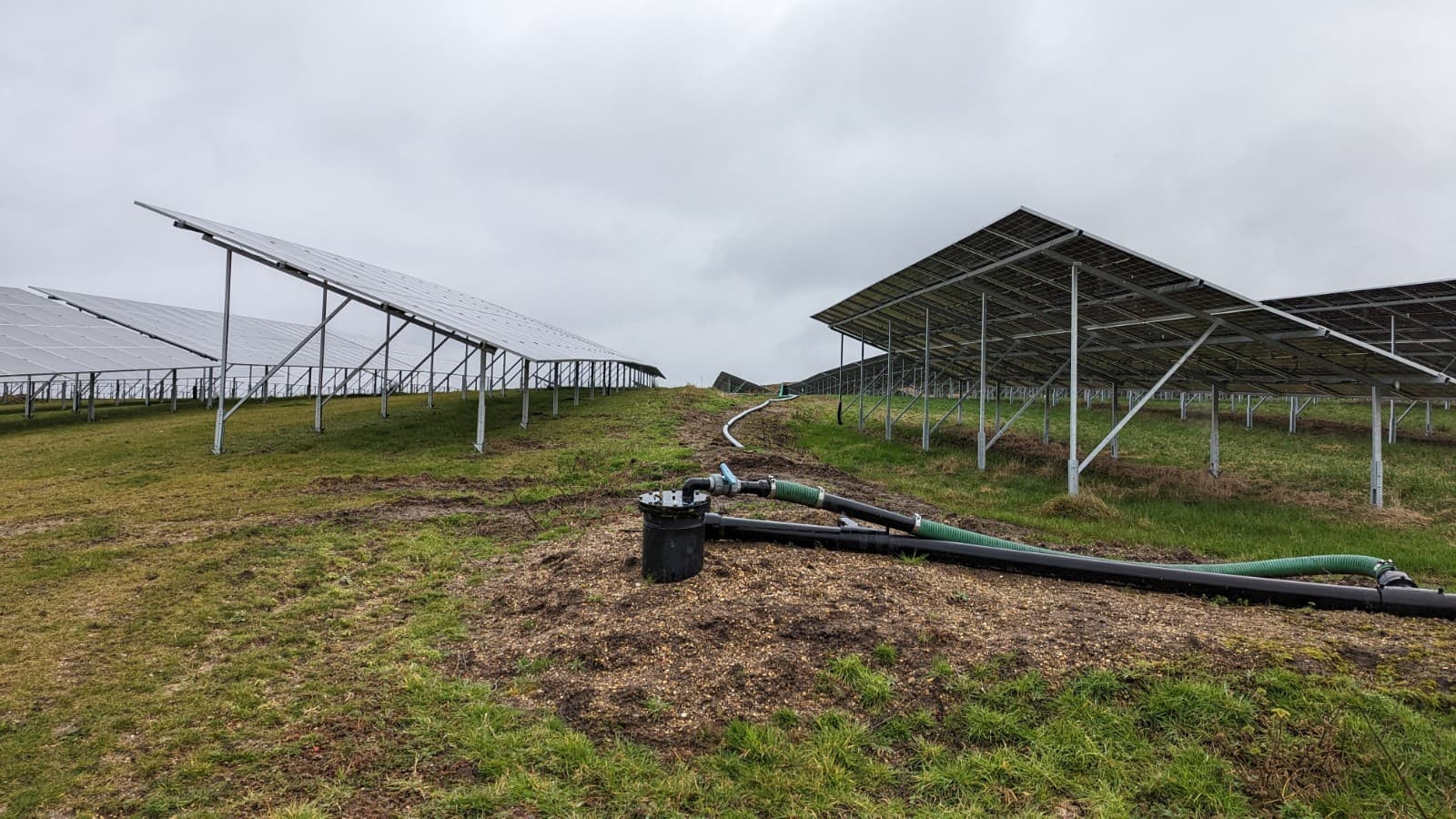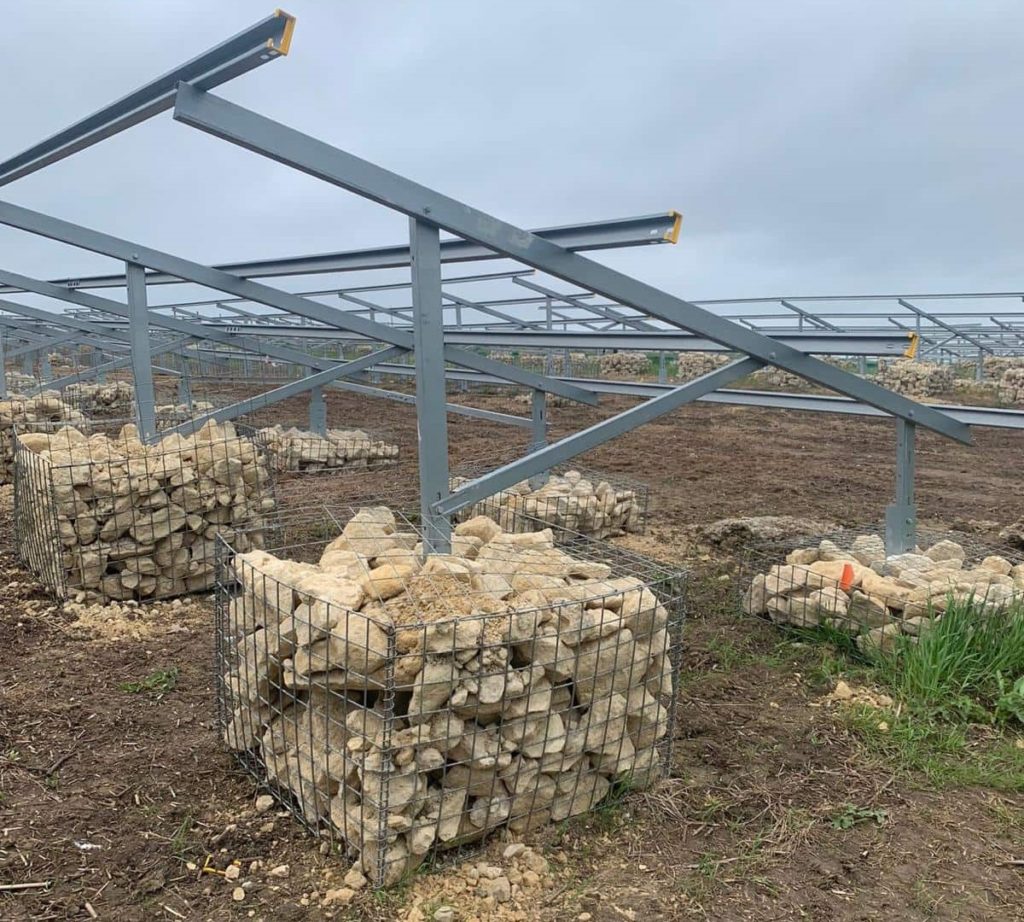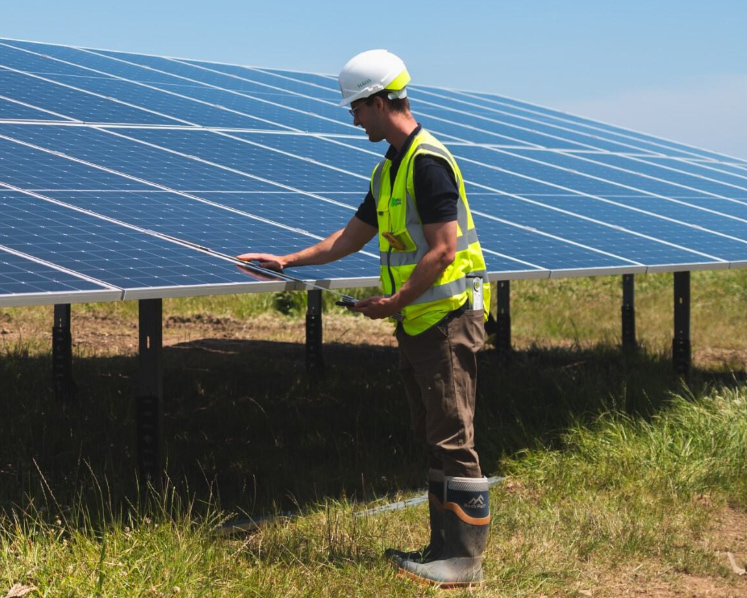
Why develop solar farms on brownfield land?
Brownfield solar farms offer many benefits over traditional greenbelt developments. In fact, what makes brownfield land poor for housing often makes it great for solar!
Here are just a few benefits of brownfield renewable assets:
- Grid connections – To feed energy into the National Grid, you need an access point. Proximity to such a grid access point is a core factor in determining suitability for a solar farm. Due to their previous industrial function, many brownfield sites already sit on a grid connection. This can cut years off of development time, potentially leading to improved profitability.
- Distance from residential areas – Brownfield sites such as industrial parks or capped landfills are typically already situated away from residential areas. While greenbelt solar farms are well-screened from public roads and designed to minimise glare etc, brownfield solar development is less likely to need such provisions in order to attain planning permission.
- Unsuitability for other developments – Brownfield sites are often relatively remote and lack access to amenities needed for housing projects. The nature of their previous function may also act as a barrier to housing development, such as in the case of capped landfills, which cannot support heavy machinery or deep foundations.
Landfill solar farms
According to government figures, there are over 20,000 former landfills in the UK. Many of these have a grid access point, or are very near to one, as a result of landfill gas (LFG) extraction. LFG, a mixture of methane and carbon dioxide, is produced naturally in landfills and can be extracted for power generation using a series of pipes and wells.
The rise and fall of these gas pockets leads to land deformation, making it difficult to build anything on top. Fortunately, solar farms are relatively light and, thanks to our engineering expertise, can be built with very shallow foundations.
We can also deploy a number of technical solutions that allow us to use very shallow anchoring solutions while also adjusting the height and angle of the panels if the land subsides.
Landfill solar farms can also be designed to allow for continued gas extraction, leading to energy generation above and below the ground. In most cases, a grid connection point is already in place, so all that is needed is for solar experts to come in and deliver the technical solutions.
Brownfield solar in action
Learn about how we build solar farms on former landfills, together with our partners at Infinis in Power Shift: The Renewable Energy Revolution, a news-style programme detailing our collective pivot away from fossil fuel reliance towards widespread adoption of renewable energy solutions.
Filmed by ITN Business, the show premiered at COP29 in Azerbaijan, to help encourage world leaders to promote and facilitate these vital solutions.
Watch now to learn more about how former landfills can be used to develop solar farms more quickly, and the kinds of engineering solutions Ethical Power utilises to make this happen.
Learn about how we build solar farms on former landfills, together with our partners at Infinis in Power Shift: The Renewable Energy Revolution, a news-style programme detailing our collective pivot away from fossil fuel reliance towards widespread adoption of renewable energy solutions.
Filmed by ITN Business, the show premiered at COP29 in Azerbaijan, to help encourage world leaders to promote and facilitate these vital solutions.
Watch now to learn more about how former landfills can be used to develop solar farms more quickly, and the kinds of engineering solutions Ethical Power utilises to make this happen.
Technical solutions for landfill solar farms
Brownfield sites such as former landfills are in many ways ideal sites for solar farms, as they are typically unused, unsuitable for most development, and often come with a grid connection already in place.
However, they come with unique challenges. Landfills produce methane gas as waste below ground decomposes, causing the land to swell. Tapping this gas for energy generation causes the land to recede again. Solar development must take into account this shifting topography at every stage of development, from design to operation.
X Anchors
Former landfills are often sealed off with plastic sheeting and clay, helping to contain the waste and prevent any runoff. As a result, typical piling and solar module foundations cannot be used without risking damage to the cap. To get around this, we use special X-shaped structures at the foot of the panel mounts. These act like roots, anchoring the frame in the ground without requiring traditional piling.

Gabion Baskets
In some parts of a landfill site, the angle of the land is too steep and the cap is too shallow to allow for X-anchors. In this case, we use gabion stone baskets to anchor the panel mounts. Gabion baskets are typically filled with concrete. However, this has a very high carbon footprint so we looked for an alternative. Reclaimed stone, often leftover from other constructions, gives us the stability we need to secure the solar panel structures without impacting our ESG commitments. As an added benefit, the use of reclaimed stone also provides new habitats for small creatures like insects.

Additional SHEQ measures
We make a consistent and conscious effort to ensure that all our sites are safe to work on. Working on capped landfills comes with extra considerations, especially as there are gas wells and compressed air pipes on site. In order to work safely in these conditions, we adhere strictly to DSEAR regulations. As such, all persons on site must wear a personal gas monitor at all times.

Protecting the existing infrastructure
Extracting gas and removing leachate involves a complex system of pipes and valves, both on and under the soil. By the time the land is ready for solar farm development, most of the gas production should be complete. However, this network of pipes and caps must still remain intact and undisturbed, which poses an additional challenge for our site team.
Through meticulous surveying, we gain precise measurements of the cap depth and pipe location, but over the years there may be some shifting. To avoid any accidental snagging of stray pipework, we avoid using toothed buckets on excavators and opt for a shovel blade instead.
We also use smaller vehicles, often with tracked treads, to create a more even distribution of weight across the delicate cap.
Renewable energy for businesses
There are many different ways we can generate solar energy on brownfield land. For large businesses and corporations, this can open up a world of possibilities regarding clean energy procurement and cost hedging.
Many businesses, for example, sit on disused land such as decommissioned industrial sites. This space can be used to house solar or battery storage assets, with the generated energy either used directly via a “private wire”, sold to the grid, or hedge company-wide energy costs as part of a “sleeved” corporate power purchase agreement (CPPA).
We have years of experience in finding solutions for our customers, both technical and contractual.
If you are looking to take advantage of disused brownfield land, get in touch today to find out how we can you started.